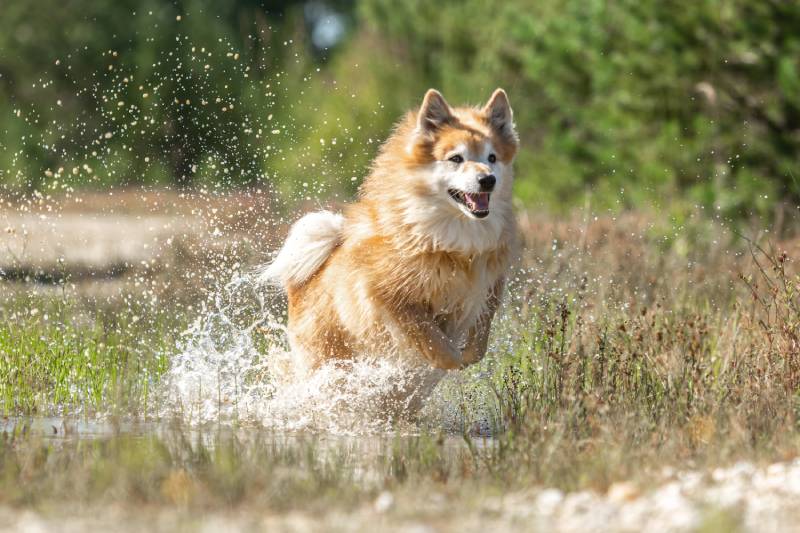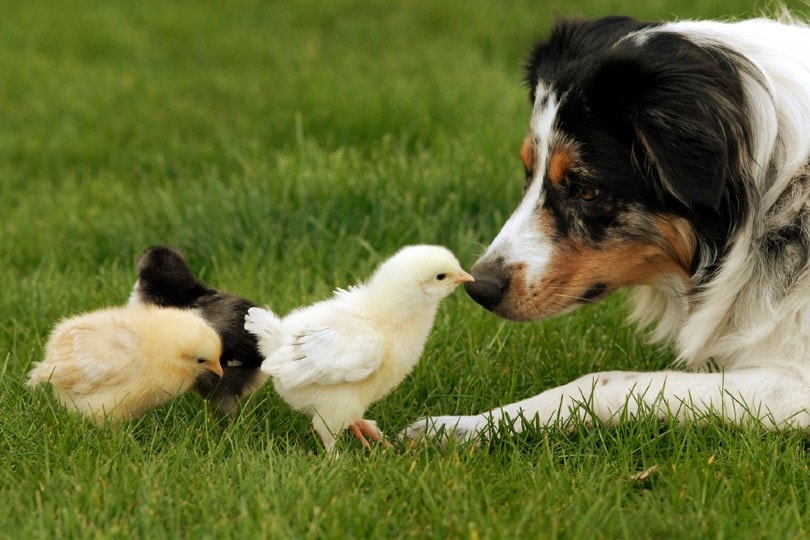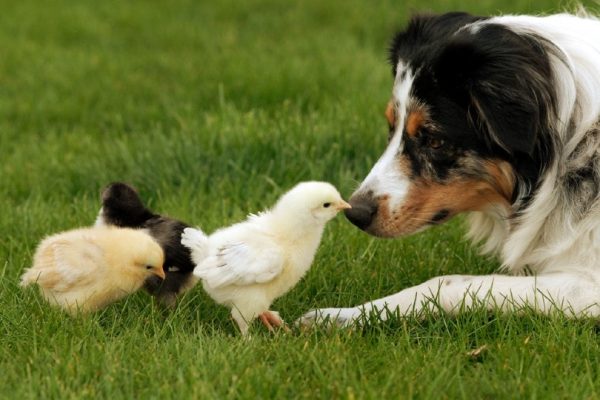Keeping dogs and chickens together may sound strange, but people have been doing it for hundreds of years to protect their birds from wild animals and thieves. If you have chickens and are thinking about getting a dog, you will be glad to know that it’s quite possible for the two to cohabitate. However, there are quite a few things that you will need to consider first. Read on for a guide to help you safely bring these two animals together.
How to Keep Dogs and Chickens Together
1. Choose the Right Breeds
The Right Dog Breeds
One of the first things you will need to think about when considering bringing dogs and chickens together is what dog breed you are thinking of purchasing. Some breeds have a strong prey drive that will cause them to chase after your chickens, putting them in harm’s way. Breeds like the Airedale Terrier and most other terriers will chase your chickens, as will hounds like the Greyhound and Wolfhound. The Doberman, Beagle, and Siberian Husky will also likely chase your chickens, and any mixed breed with one or both of these as a parent will be dangerous.
Most Spaniels, like the Cocker Spaniel, will likely not attack your chickens. Other breeds that should be safe include the Great Pyrenees, Maltese, Pug, and many others. It’s better to select one of these breeds to keep around your chickens. Most will do a fine job of protecting them, and they make great pets.
Of course, the best bet is a dog breed that’s a livestock breed. Sheepdogs, Border Collies, Akbash, and Shepherd dogs are your best bet in getting a dog that will quickly identify the chickens as family and something that they need to protect.

The Right Chicken Breeds
To a lesser extent, the breed of chicken will also be a part of the puzzle. Some breeds like the Asil, Cornish, Buckeye, and Sumatra are extremely aggressive. These birds will be challenging to raise alongside a dog, as they might attack them. You will need to find a friendlier chicken, like the Austraslorp, Silkies, or Cochin, for a better chance at cohabitation.
2. Train Your Dog
Once you know what breed of dog and chicken you will use, the next step is proper training.
Socialization
If possible, get your dog used to the chickens at a very early age for the best chance of long and happy lives together. You can still train older dogs, but the process is much easier if you start with a puppy.
Slow Introduction
When you first introduce your dogs to your chickens, you will need to move slowly. It’s best if you have already taught your dog a few commands, especially “sit.” When you go to your coop in the morning to collect eggs, take your dog with you, and have them sit quietly while you do your work so they can get familiar with the scent of the coop. If you finish your work and your dog remains seated, give them a treat and do it again the next day.
There’s a chance that your dog will break free and try to chase after the chickens, which is why it’s advisable to have your dog on a leash for the first few introductions to the chickens. Using the services of a dog trainer might also be warranted to ensure that your dog learns that the chickens aren’t to be played with or hunted.

Mingling
Once your pet is proficient at the slow introduction, you can move on to the mingling step. In this step, you take the dog into the pen while the chickens roam around the yard. Slowly walk by each one with your dog, and if your pup behaves peacefully, give them a treat. If your pup starts to bark or chase, use a stern “No” and offer them appropriate correction.
Depending on your dog, your training ability, and your flock, you might need some time before your dog gets accustomed to the flock (and vice versa). As always, a leash can help you be in better control of the situation. If your dog has a tendency to bite or if you’re scared that your dog might inadvertently bite your birds, consider a breathable muzzle or the services of a dog trainer.
Summary
It may seem risky, but with plenty of patience and close supervision, you can have chickens and dogs living together happily. You can even train dogs with a strong prey drive, but we recommend getting plenty of experience before giving it a try. We recommend using a leash and muzzle at first to eliminate danger, but training without it is also important so your dog learns to remain behaved. Dog breeds with a low prey drive will be the most successful, as most of them will have little interest in chickens but will still protect them by barking at intruders.
See also:
Featured Image Credit by: Tracey Helmboldt, Shutterstock













